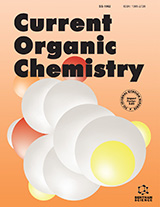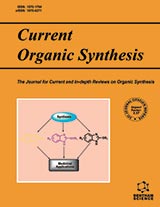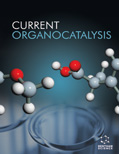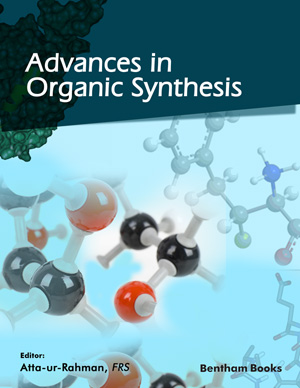Abstract
Owning to its large surface area and atomic thickness, graphene possesses exceptional mechanical, optical and electrical properties. Up to now, graphene and its composites/ hybrids have been widely used in various scientific fields such as drug carriers, electronics, transistors, sensors, conductive materials and so on. Unfortunately, the prospects of more extensive applications of graphene have been impeded by its poor dispersibility, processability and tunability. However, graphene can be chemically modified, and the well-chosen organic molecules with active functional groups would react with graphene to form low-dimensional graphene-organic architectures. The controlled functionalization of organic molecules onto the defective sites of graphene is a very effective route for fabrication of graphenebased composite materials. The aim of this article is to present an overview of the surface functionalization methodologies which are valuable for the selective construction of highly functionalized graphene with controllable properties. The interactions between graphene and organic molecules were discussed in detail. We hope to provide some useful references and enlightened views for scientific research groups.
Keywords: Graphene, graphene oxide, composite materials, functionalization, methodologies.
Graphical Abstract
Current Organic Chemistry
Title:The Covalently Organic Functionalization of Graphene: Methodologies and Protocols
Volume: 20 Issue: 12
Author(s): Jin-Gang Yu, Bao-Yu Yue, Xiong-Wei Wu, Qi Liu, Xin-Yu Jiang, Ming Zhong, Hui-Yong Li, Shan-Shan Li and Xiao-Qing Chen
Affiliation:
Keywords: Graphene, graphene oxide, composite materials, functionalization, methodologies.
Abstract: Owning to its large surface area and atomic thickness, graphene possesses exceptional mechanical, optical and electrical properties. Up to now, graphene and its composites/ hybrids have been widely used in various scientific fields such as drug carriers, electronics, transistors, sensors, conductive materials and so on. Unfortunately, the prospects of more extensive applications of graphene have been impeded by its poor dispersibility, processability and tunability. However, graphene can be chemically modified, and the well-chosen organic molecules with active functional groups would react with graphene to form low-dimensional graphene-organic architectures. The controlled functionalization of organic molecules onto the defective sites of graphene is a very effective route for fabrication of graphenebased composite materials. The aim of this article is to present an overview of the surface functionalization methodologies which are valuable for the selective construction of highly functionalized graphene with controllable properties. The interactions between graphene and organic molecules were discussed in detail. We hope to provide some useful references and enlightened views for scientific research groups.
Export Options
About this article
Cite this article as:
Yu Jin-Gang, Yue Bao-Yu, Wu Xiong-Wei, Liu Qi, Jiang Xin-Yu, Zhong Ming, Li Hui-Yong, Li Shan-Shan and Chen Xiao-Qing, The Covalently Organic Functionalization of Graphene: Methodologies and Protocols, Current Organic Chemistry 2016; 20 (12) . https://dx.doi.org/10.2174/1385272819666151012194224
| DOI https://dx.doi.org/10.2174/1385272819666151012194224 |
Print ISSN 1385-2728 |
| Publisher Name Bentham Science Publisher |
Online ISSN 1875-5348 |
 49
49 3
3 1
1
- Author Guidelines
- Bentham Author Support Services (BASS)
- Graphical Abstracts
- Fabricating and Stating False Information
- Research Misconduct
- Post Publication Discussions and Corrections
- Publishing Ethics and Rectitude
- Increase Visibility of Your Article
- Archiving Policies
- Peer Review Workflow
- Order Your Article Before Print
- Promote Your Article
- Manuscript Transfer Facility
- Editorial Policies
- Allegations from Whistleblowers
- Announcements
























